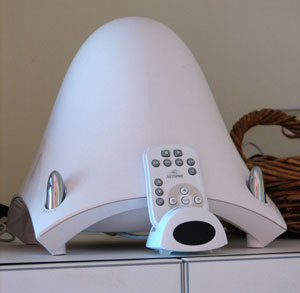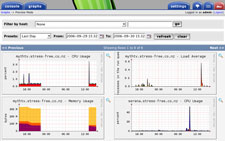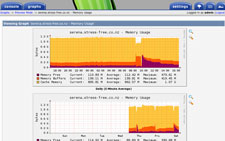I stream music and podcasts from the computers in the office into kitchen using an Airport Express unit. Whilst the Airport Express units are little pricey they are very versitile, the only problem being they do not come with any remote which results in a lot of trips backwards and forwards to adjust the volume and what is playing. I finally got sick of this and ordered an Keyspan Express Remote from TotallyMac.com. It turns out that the New Zealand office of TotallyMac.com is in Wellington and within a couple of hours of placing the order I had the remote in my hands (which was fantastic service).
Setting up the remote was a piece of cake as it plugs into the Airport Express via USB and sets itself up to work with iTunes automatically. The remote looks okay although it would have been much better if it had a more stylish look and feel similar to the Apple remote. However this is only a minor drawback considering the price and functionality delivered. If you own an Airport Express (or are thinking of getting one) I definitely recommend picking up one of these remotes in order to complete the experience.






